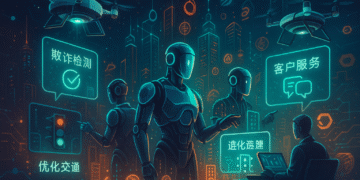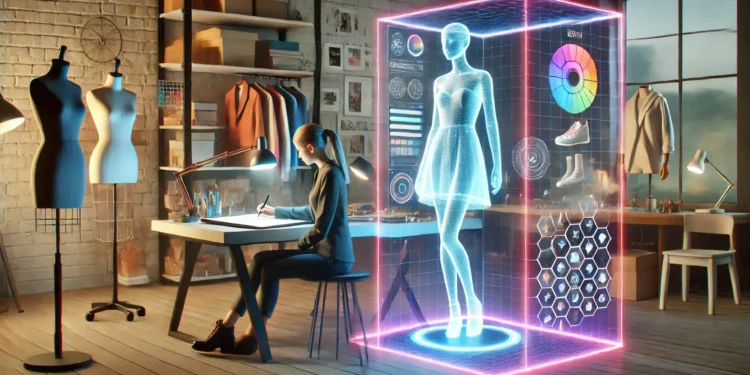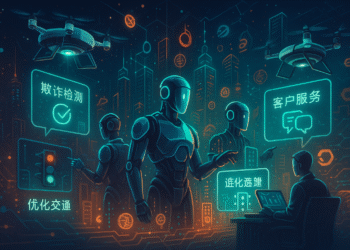Generative AI represents one of the most groundbreaking advancements in artificial intelligence. By creating new content—be it text, images, music, or designs—based on patterns it has learned, generative AI is redefining how humans collaborate with machines. Here’s an exploration of its potential and how it’s already transforming industries like fashion and design.
What Is Generative AI?
Generative AI refers to algorithms capable of producing novel outputs based on training data. Using models like GANs (Generative Adversarial Networks) and large language models like ChatGPT, generative AI can create entirely new, realistic, and high-quality outputs. Unlike traditional AI, which analyzes or categorizes, generative AI creates—offering endless opportunities for innovation.
Why Generative AI Matters
Generative AI isn’t just about automation; it’s about amplifying creativity. It enables human-machine collaboration where AI acts as a co-creator rather than a replacement. This dynamic opens up possibilities in areas where creative expression and innovation are essential.
Transforming Fashion and Design with Generative AI
1. Personalized Fashion
Generative AI allows designers and brands to create highly personalized clothing and accessories. By analyzing customer preferences, body types, and trends, AI can generate unique designs tailored to individuals. For example:
- Virtual Fitting Rooms: AI-generated avatars enable customers to “try on” clothes virtually, improving online shopping experiences.
- Customized Prints: Generative AI can create bespoke patterns and prints for fabrics, giving customers one-of-a-kind pieces.
2. Design Prototyping
Creating prototypes for garments or products can be time-consuming and costly. Generative AI accelerates the process by:
- Generating multiple design iterations in seconds.
- Simulating fabric behavior or product performance in virtual environments, reducing the need for physical samples.
3. Trend Forecasting
AI models trained on industry data can predict upcoming fashion trends by analyzing consumer preferences, cultural movements, and historical data. Designers can leverage these insights to stay ahead of the curve and create collections aligned with future demand.
4. Sustainability in Fashion
Generative AI is helping tackle waste in the fashion industry. By optimizing designs and minimizing material usage, AI-driven solutions enable more sustainable production processes. Additionally, virtual fashion—clothing designed purely for digital use—has emerged, reducing the environmental footprint of fast fashion.
5. Architectural and Interior Design
In the design world, generative AI tools like MidJourney or DALL-E allow architects and interior designers to visualize concepts instantly. AI can create:
- Floor plans or 3D renderings for interiors based on specific client preferences.
- Futuristic and complex building designs that push the boundaries of human imagination.
Advantages of Generative AI in Collaboration
- Speeds Up Iteration Cycles: Designers can quickly test and tweak ideas, saving time and resources.
- Democratizes Creativity: Non-experts can use generative AI tools to create professional-level designs without technical skills.
- Enhances Accessibility: Generative AI can assist disabled artists or designers by automating technical aspects of creation.
- Pushes Creative Boundaries: By generating novel ideas and exploring unconventional patterns or forms, AI can inspire human designers to think differently.
Challenges to Overcome
- Authenticity and Ownership: Who owns a design created by AI? Resolving copyright and intellectual property issues will be crucial.
- Ethical Concerns: There’s a risk of over-reliance on AI, leading to a loss of genuine human expression in art and design.
- Bias in AI Models: AI-generated content can reflect biases present in training data, resulting in culturally insensitive designs or unfair representations.
The Future of Generative AI in Human-Machine Collaboration
Generative AI is not about replacing human creativity—it’s about enhancing it. As tools become more advanced and accessible, the collaboration between humans and machines will foster innovations that were once unimaginable. In fashion, design, architecture, and beyond, generative AI is not just a tool; it’s a partner in shaping the future of creative industries.
The next frontier lies in how effectively humans and machines can work together to create designs that resonate emotionally, function practically, and push the boundaries of what’s possible. With generative AI, the canvas is limitless.
What are your thoughts? We’d love to hear your take on this topic! Share your ideas, opinions, or questions in the comments below.👇















